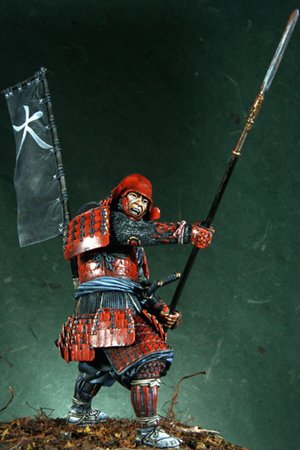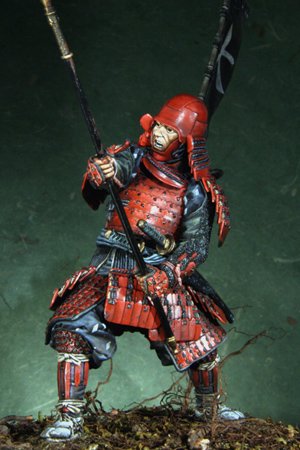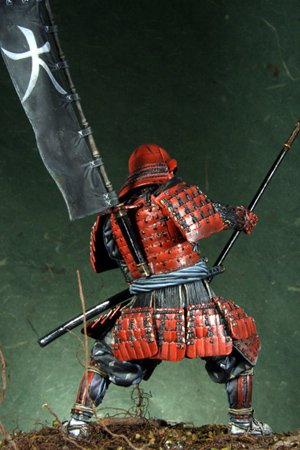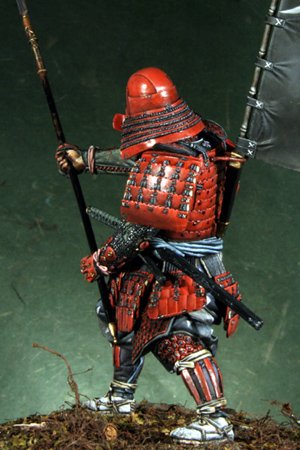







Ref.: ROME-90013

Samurai Azuchi-Momoyama period, 1568-1600 In the chronological history of Japan, the Azuchi-Momoyama period (1568 – 1600) is the epoch of unification. This period witnessed the decline of the grand warlords such as Takeda Shingen (1521 – 1573), Oda Nobunaga (1534 – 1582) and his lieutenant/deputy Toyotomi Hideyoshi (1536 – 1598) until the final triumph and affirmation over all warlords by Tokugawa Ieyasu (1542 – 1616) who made himself shogun. Tokugawa Ieyasu introduced a long period of peace known as Tokugawa or Edo period named after the capital city. Before this period of peace however, there was an epoch of grand battles between the samurai who lived during those turbulent times. Our samurai is wearing armour similar to that which tradition describes was worn by Ii Naomasa at the Battle of Sekigahara (1600) entirely lacquered in red with silk cords and laces in yellow. He carries on his back the sashimono or flag, a use introduced in the Japanese military around 1573 demonstrating a strong external influence on the Japanese military tradition during the Azuchi-Momoyama period. Apart from the paired swords (dai-sho) that every samurai carried, namely the katana and wakizashi, a popular form of combating between the samurais was the fighting with lances with straight blades known generically as yari. There were many variations of this weapon. The yari with blades of rhomboidal sections were known as ryo-shinogi-yari, whilst those with blades of triangular sections were known as sankaku-yari. The blades used for foot combat had blades more than 40cm in length. The famous samurai Kato Kyomasa, hero of the Battle of Shizugatake in 1583, used during the course of his brilliant military career the lance type known as katana-yari with the ‘L’ shaped blade, a variation of the jumonji-yari type with the three pointed blade (a reverse ‘T’ blade).